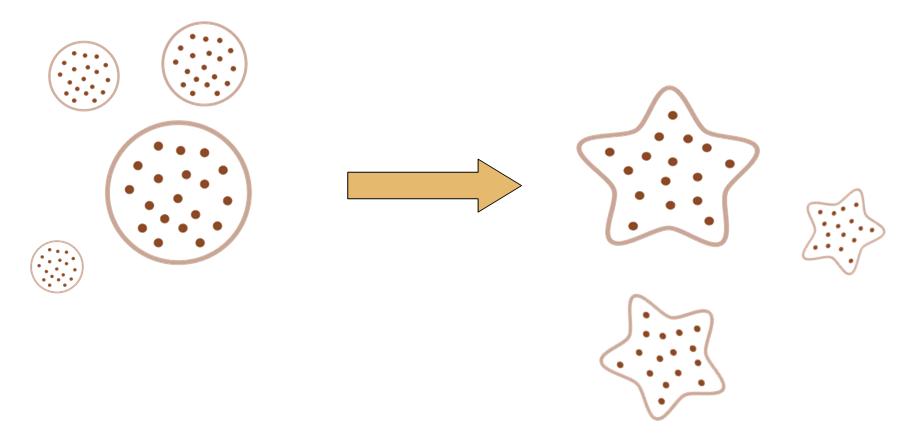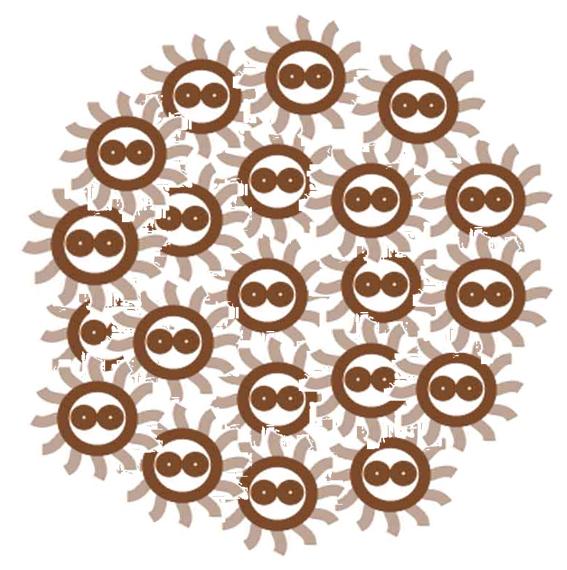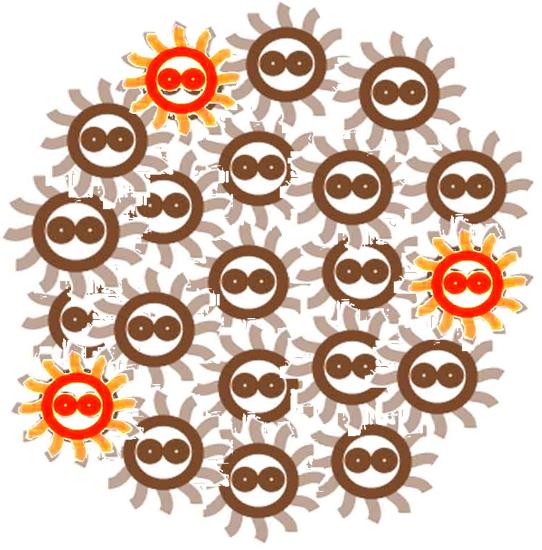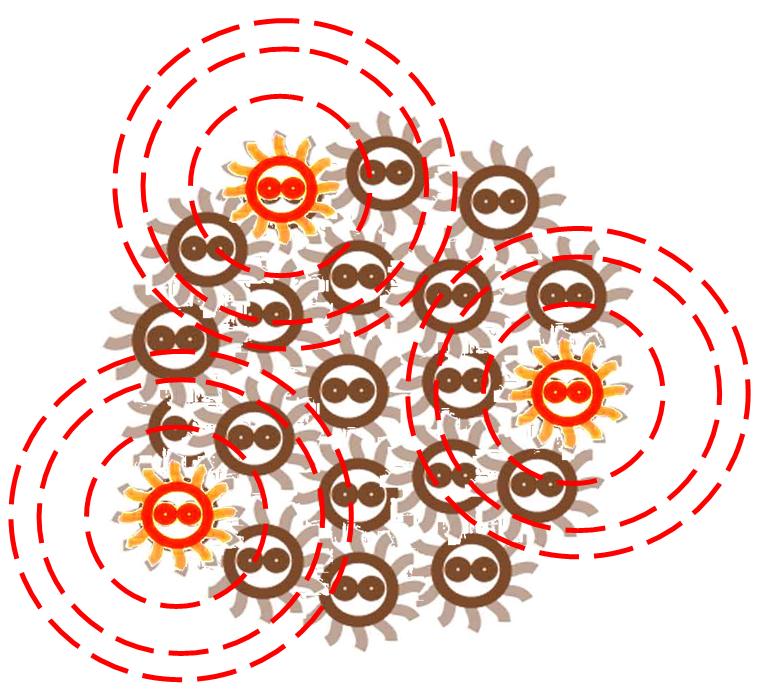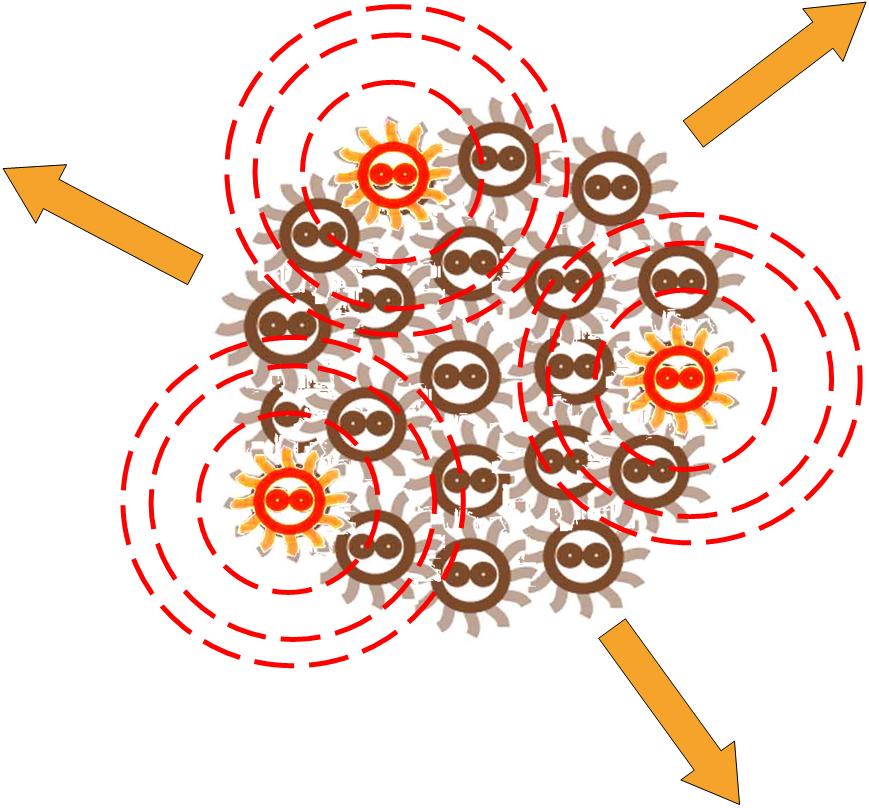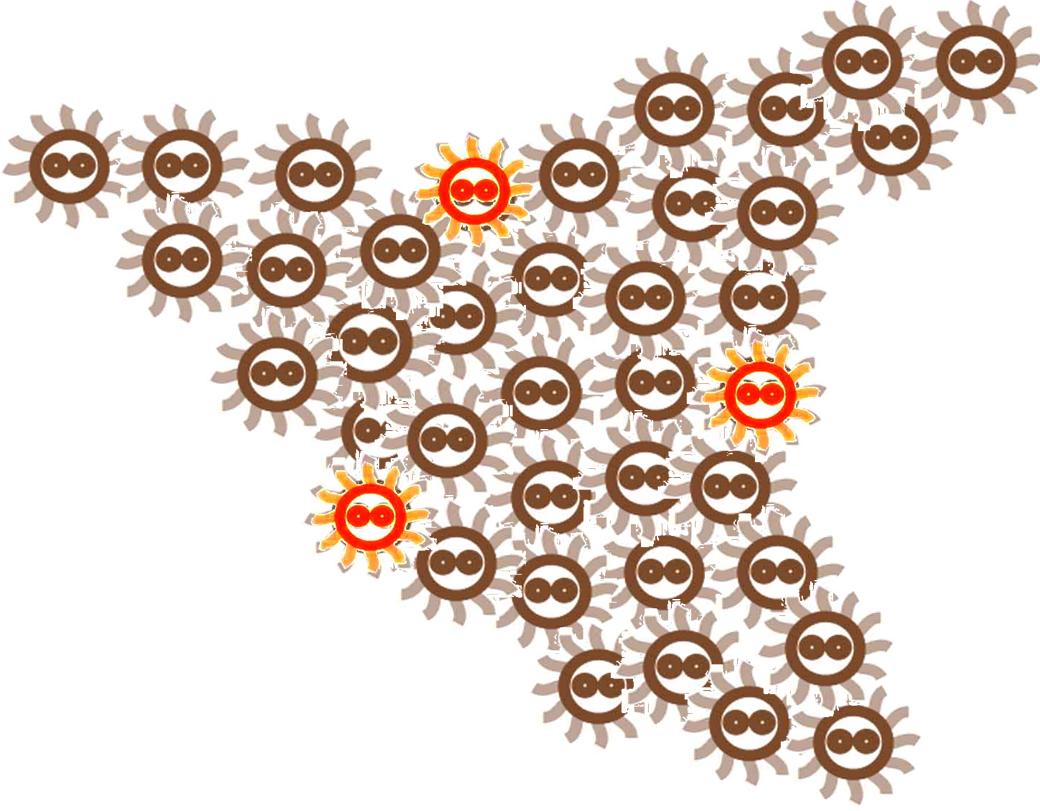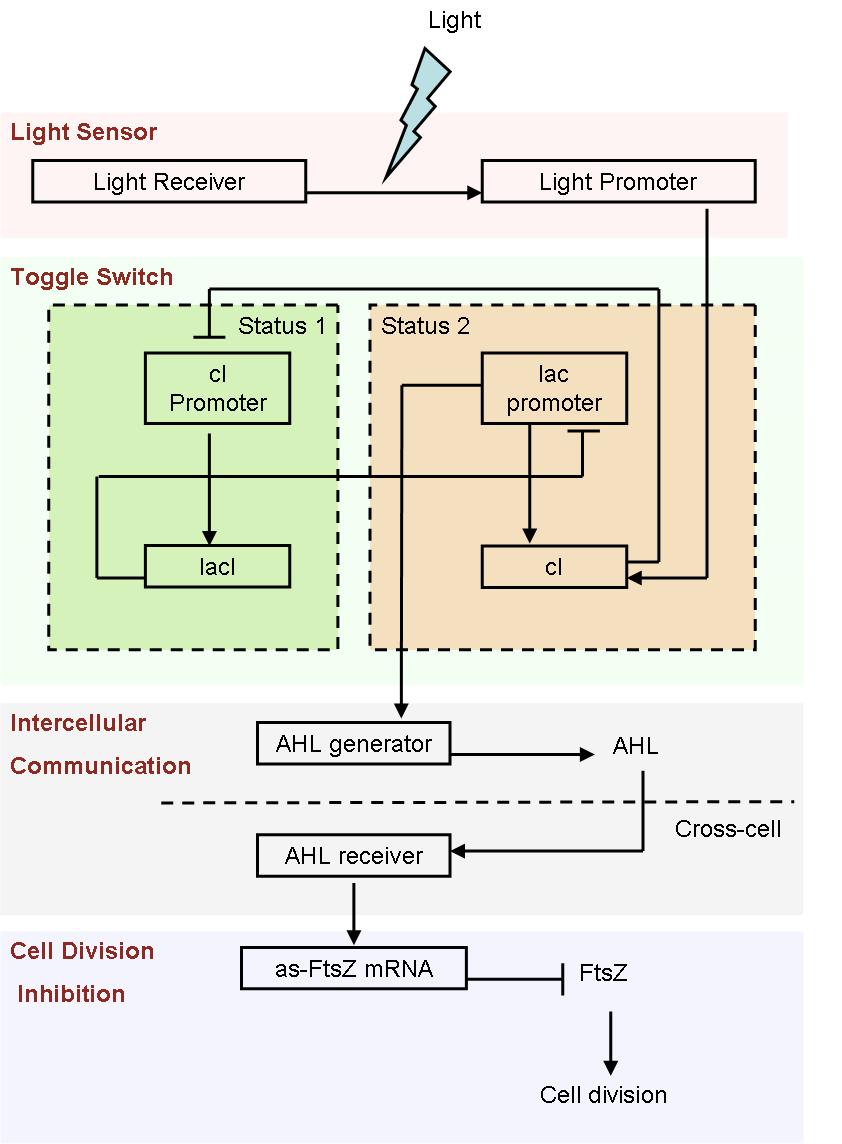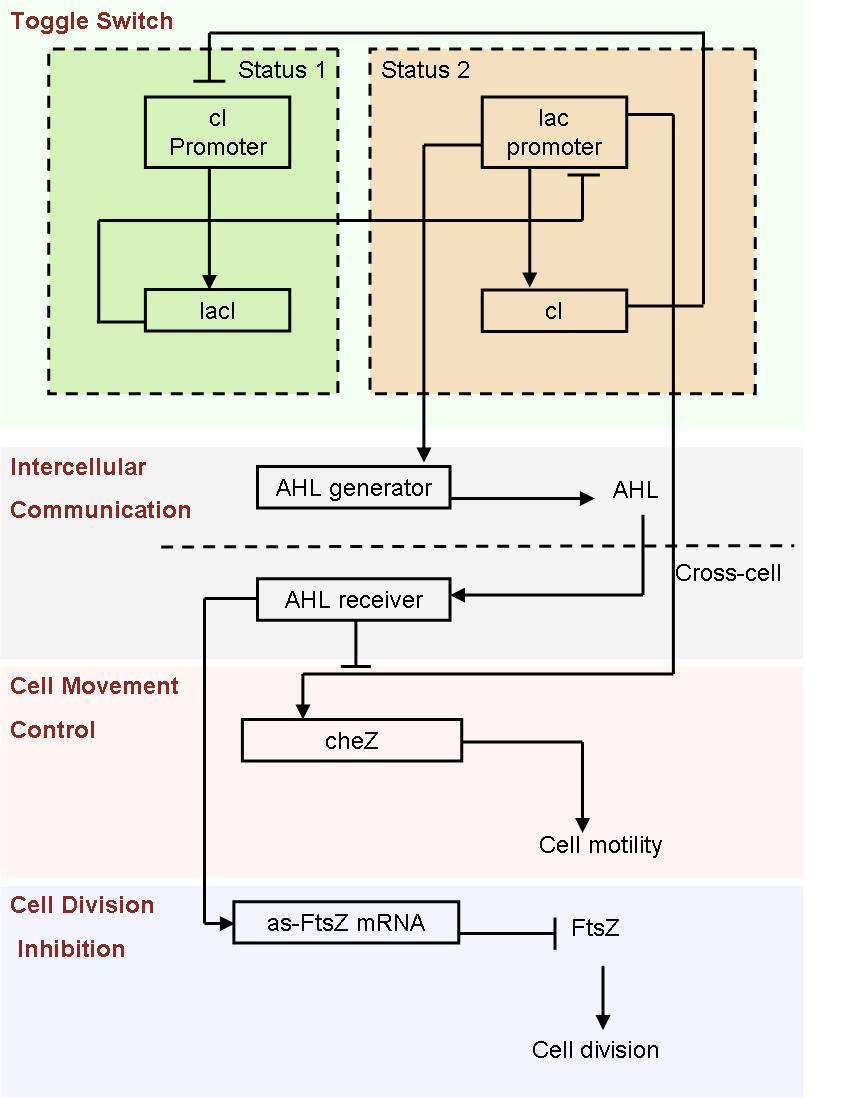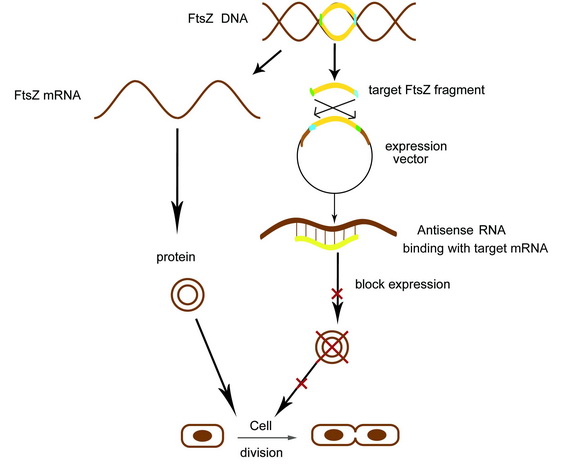Team:SEU O China/Project
From 2012.igem.org
| Line 82: | Line 82: | ||
[[File:SeuoSt6.JPG |450px| center]] | [[File:SeuoSt6.JPG |450px| center]] | ||
| - | The very idea of this process come from the slime's fruit body generation, which include the formation of special regions inside colony, the intercellular communication, and control of cell movement. Special thanks to those one-level monsters we have fought in so many games for years.... | + | |
| + | ---- | ||
| + | |||
| + | |||
| + | The very idea of this process come from the slime's fruit body generation, which include the formation of special regions inside colony, the intercellular communication, and control of cell movement[1]. Special thanks to those one-level monsters we have fought in so many games for years.... | ||
| + | |||
| + | |||
| + | [1] Oleg A. Igoshin et al. Breakingsymmetry in myxobacteria, Curr Biol. 2004 Jun 22;14(12):R459-62. | ||
<html> | <html> | ||
Revision as of 16:33, 22 September 2012


Project
Background
The original idea of this project is really simple. Getting bored of the indifferent, round round colony on the culture dish, we wish to make the bacteria grow into the form of a star, a smiling face, or any other patterns we desire.
Instead of the traditional method of painting a star on the culture dish, and let the colony grow into this pattern, we try to design a biobrick system which let the bacteria take the irregular shape all by itself, despite external conditions.
That means, not only the colony can grow into to shape of a star, but also, even if you pick one cell from the colony, and incubate it on another clean culture medium. That cell will also grow into a colony, which has the shape of a star.
Although the idea is like some kind of bio-game, our project is not that meaningless. Comparing the single cell organism like Escherichia coli, and some simplest multicellular organism like Slime which can act like a whole body in tough environment, we notice that a significant difference between them is that the cells of a multicellular organism can act as a whole, and construct a certain structure.
That is to say, the biobrick system we are constructing is meant to make the single cell bacteria grow into a colony which can act like a multicellular organism. To perform gene manipulation on a multicellular level would be a promising and interesting task.
Story
At first, the cells in a colony are all indifferent, and the toggle switches in cell are on the same status.
After some events, some of the cells become special. The switch is turned on, and the differentiation happens.
The special cells generate signal molecular which affect the nearby cells in the colony.
Responding to the density of signal molecular, the division rate of cells in the colony changes differently. Bacteria tend to divide slower in the place where the signal density is higher.
After some time, the Bacteria colony would grow into a certain pattern like this.
By controlling related parameters, it would be possible to create different shapes with bacteria colony.
The very idea of this process come from the slime's fruit body generation, which include the formation of special regions inside colony, the intercellular communication, and control of cell movement[1]. Special thanks to those one-level monsters we have fought in so many games for years....
[1] Oleg A. Igoshin et al. Breakingsymmetry in myxobacteria, Curr Biol. 2004 Jun 22;14(12):R459-62.
System
In order to construct a multicellular system, several vital parts must be taken into consideration. We use a toggle switch to save a status, which simulates the cell differentiation, a AHL generate-receive system for intercelluar communication, an antisense mRNA biobrick as cell division inhibitor, in order to control the shape of bacteria colony. We designed a cell movement control device to start the differentiation automatically, as well as a light sensor system to start it artificially for easier control and further application.
Since it is not easy to create a auto-differentiation system from scratch, we decide to start from a light induced system. That means, the first special cells are triggered artificially by light.
- Scheme of light induced differentiation system:
At the beginning, we can set all the cells are on status 1 by exposure of UV light. Thus, the cI promoter is switched on and lacI protein is produced. So, at this time, the lac promoter is inhibited and the signal molecular is not generated.
When a cell gets a light signal, the light sensor system will be triggered, and a small amount of cI protein will be produced, which can repress the cI promoter. Then, the toggle switch will be set to status 2, in which the lac promoter is active. Promoted by the lac promoter,
- Scheme of auto-differentiation system:
Light Sensor
Toggle Switch
Intercelluar Communication

 "
"
